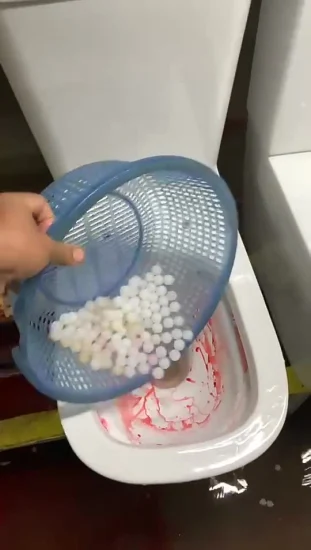Can One to Flush Food in the Toilet?
Can One to Flush Food in the Toilet?
Blog Article
Just about everyone has his or her own opinion when it comes to Think Twice Before Flushing Food Down Your Toilet.

Intro
Many individuals are frequently faced with the issue of what to do with food waste, specifically when it involves leftovers or scraps. One usual question that occurs is whether it's all right to purge food down the toilet. In this post, we'll delve into the reasons people could think about flushing food, the repercussions of doing so, and alternative approaches for proper disposal.
Reasons why people might think about flushing food
Absence of understanding
Some individuals may not understand the possible injury caused by purging food down the bathroom. They might incorrectly think that it's a harmless practice.
Convenience
Purging food down the toilet may appear like a fast and very easy option to getting rid of undesirable scraps, specifically when there's no nearby garbage can readily available.
Negligence
Sometimes, individuals may merely select to flush food out of large idleness, without taking into consideration the consequences of their actions.
Repercussions of flushing food down the toilet
Ecological influence
Food waste that winds up in rivers can add to pollution and damage aquatic communities. In addition, the water used to flush food can strain water sources.
Pipes concerns
Purging food can lead to stopped up pipelines and drains pipes, creating expensive pipes repairs and aggravations.
Types of food that ought to not be flushed
Coarse foods
Foods with fibrous structures such as celery or corn husks can get entangled in pipes and cause clogs.
Starchy foods
Starchy foods like pasta and rice can soak up water and swell, leading to clogs in pipes.
Oils and fats
Greasy foods like bacon or food preparation oils ought to never be flushed down the commode as they can solidify and trigger blockages.
Appropriate disposal methods for food waste
Making use of a garbage disposal
For homes equipped with garbage disposals, food scraps can be ground up and purged through the plumbing system. Nonetheless, not all foods appropriate for disposal in this fashion.
Recycling
Certain food product packaging products can be reused, lowering waste and reducing environmental effect.
Composting
Composting is an environmentally friendly way to deal with food waste. Organic materials can be composted and utilized to improve dirt for gardening.
The relevance of proper waste monitoring
Lowering ecological harm
Correct waste monitoring methods, such as composting and recycling, help reduce pollution and preserve natural deposits for future generations.
Shielding plumbing systems
By staying clear of the practice of flushing food down the bathroom, homeowners can protect against costly pipes repairs and maintain the integrity of their plumbing systems.
Final thought
Finally, while it may be appealing to purge food down the bathroom for ease, it is essential to comprehend the prospective repercussions of this activity. By embracing appropriate waste management practices and disposing of food waste properly, individuals can add to healthier pipes systems and a cleaner environment for all.
THINK TWICE BEFORE FLUSHING FOOD DOWN YOUR TOILET IN FALLBROOK CA
Let’s be honest, we’re really supposed to be tossing rotten or leftover food in the compost bin or trash can. But many people like to place scraps of food down the drain of, say, their kitchen sink. That’s why the garbage disposal was invented: so we can continue to place certain foods down the drain without clogging our drain in the process. Smart.
But not all of us have the luxury of having a garbage disposal installed. So, you might continue to shove food down your sink drain anyway – or worse: you might flush them down your toilet! If you’re guilty of doing the latter, you’re going to want to stop, and here’s why:
Toilet Drains Aren’t Designed to Handle Food!
There’s your answer: food just doesn’t belong in your toilet. It may seem like your toilet drain is wider than the drains of your sinks, but truth be told, that isn’t actually the case. The narrower pipes of your toilet leave your plumbing at risk for clogging if you do happen to flush your food. In addition, food doesn’t break down as quickly that toilet paper and human waste do. In turn, this leaves your toilet at risk for a nasty clog.
Although a flush of a tiny pinch of food every now and then isn’t going to completely damage your toilet, there are certain foods that should absolutely not be flushed in your toilet at all. These include starchy foods like mashed potatoes, grains, hard pieces of food that are slow to break down, and fats and oils.
The latter categories of food are particularly problematic as they may harden, expand as they absorb water, break down slowly in your system, or generally create the perfect obstruction with their gelatinous composition. These are all things you don’t want in your plumbing system!
Experiencing a Toilet Clog?
Nobody’s perfect, and we all make mistakes. Sometimes one of the mistakes people make is flushing food down their toilet and later realizing that it wasn’t the best thing to do once they see that their toilet is now clogged. Uh-oh!

Hopefully you enjoyed reading our section about What Can Happen If You Flush Food Down the Toilet?. Thanks for finding the time to read our post. Do you know about anybody else who is curious about the niche? Why not share it. I treasure reading our article about Is it safe to flush food (especially rice) down the toilet?.
Click Here Report this page